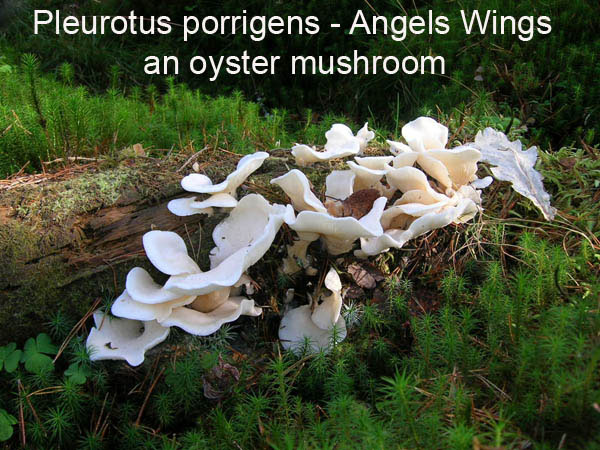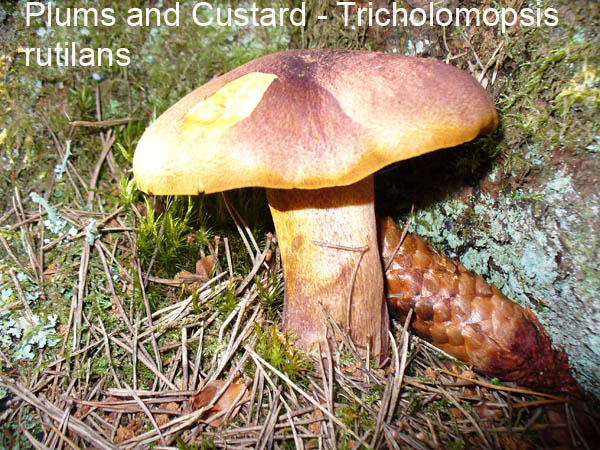September passed in a bit of a blur, to begin with – as always the start of this month dominated by the Dundee Flower Show and its pre-math and aftermath, coupled with the start of a new term at the college, which was more complicated than usual!
So what follows is by way of a summary for a month that is actually a good one for foragers usually – just needed a bit more time in our case.
On 10th, I foraged along Crieff Road in Perth for fruits and nuts for purely educational reasons, but noted some excellent elderberries on campus, and some tedious municipal planting yielded a nice bag of Japonica quinces (Chaenomeles japonica). These fragrant fruits (they are pomes to be exact) make a lovely addition to fruit pies and puddings. Blackberries ripe trailing over our back wall from the neighbours – started to harvest and freeze them.

On 14th, we went fungi-foraging and netted some Slippery Jacks, one Cep, Bay Boletes and several Angel’s Wings. Angel’s Wings are Pleurotellus porrigens, related to Oyster Mushroom but subject to some doubt in internet circles as a couple of folk in Japan once were ill on them. We’ve eaten them regularly for quite a while, and so have many others, so I am suspicious about the identification in the case in question. Worth bearing in mind, though that people can react differently to individual species, hence the confusion when one book says “edible” and another says “best avoided” or similar ambiguous verbage. The other find on the 14th comes into this category – Plums and Custard (Tricholomopsis rutilans). It’s easy to identify because Plums and Custard perfectly describes the colouring, so is good to eat on that score. Can be slightly bitter, but we eat it anyway. Braised it with shoulder of lamb and cranberries from our garden.
On 19th, it was rowan berries day. Collected a big heap of them and made rowan jelly – delicious. That week, the boletus and chanterelles I dried in July and August were put into jars for winter use, and noted the rose hips were looking good. Shaggy Ink Caps were spotted at the college, but turned to ink before I could pick them. On 26th, we raided one of our usual haunts and found, apart from the usual fungal suspects which we rounded up, a new one – Hydnum (or Sarcodon) imbricatum – a type of Hedgehog Fungus. They were tea-plate sized, scaley fruiting bodies by the edge of the path, quite spectacular. As we had never seen it before we only took one for identification, and I’m glad because they are apparently quite rare, pinewoods in Scotland being the preferred habitat. Edible though – and delicious!
Puffballs were taken with roast beef on 28th, and a dessert of blaeberries, brambles and cranberries completed Sunday Dinner.
October
Now I look at it, October is also at an end!
On 4th, we harvested a large crop of wild hazelnuts from the plantation, and so did our friends. There were plenty left for the two wild food workshops we held this month, but I seriously think it is time to coppice the hazels – the nuts are getting too high to reach! We gathered rosehips too and made syrup, and brambles continued to provide sustenance and desserts.
Removed a large Sweet Cicely that had seeded itself in the wrong place in the garden, and turned the large fat roots into soup, along with other vegetables. The aniseedy flavour when cooked is mild and enticing, blending well with other tastes.
The two workshops found plenty overall to forage, but fungi were not so thick on the ground as we might have hoped – a cold dry snap had temporarily put a halt to fruiting. Nevertheless, one high point was a massive fruiting body of Grifola frondosa which our neighbour Geoff served as a starter on the evening of the first workshop. Andrew and I squabbled over identification, I thought it was Cauliflower Fungus (Sparassis crispa) to start with, but we all realised it was just too “chunky”. Next week we found Cauliflower Fungus as well and were able to compare them side by side. Geoff found a very young Beefsteak fungus (Fistulina hepatica) – this is significant because it didn’t have any maggots in and we all got a small mouthful. Yum. A range of other edible fungi have been eaten – some good – no excellent – crops of Honey Fungus in the Forest Enterprise wood, plenty of Lycoperdon perlatum puffballs and when all else fails, Common Yellow Russula. (All else did fail, for a brief spell last week and I bought some chestnut mushrooms, reduced. Then honey fungus appeared on the lawn). We normally get a reliable crop of Shaggy Ink Caps in the hen run, but not this year, I suspect the ducks of eating them.
Nut front – Bankfoot chestnuts produced niggardly little nuts, no use to man nor beast, but James next door brought back some fat Surrey ones from Bisley, which we are roasting on the stove merrily, with the hazelnuts. Andrew went on a cider making course and has been scrumping furiously the apple crop of our other neighbours (with permission!), along with any others he can find. I went to Northumberland and found a great apple tree right in the middle of the sand-dunes at Bamburgh. We have got out our old cheese press and are also producing fresh apple juice, which is astonishingly good. Pete, who came on the second workshop sent us a tiny, but perfectly formed, pear to identify that he had found while scrumping. We were stumped, but Andy my colleague at college identified it as the Plymouth Pear, Pyrus cordata.
On 19th, I gathered elderberries and made a gallon of wine, and froze two boxes of them. Fished some out last week and made Elderberry Muffins. More Plums and Custard found on 26th.
Wild weather has seen off the rest of October – firstly howling gales and cascades of rain, then snow, followed by a big freeze. Time to stay by the stove and roast chestnuts!


